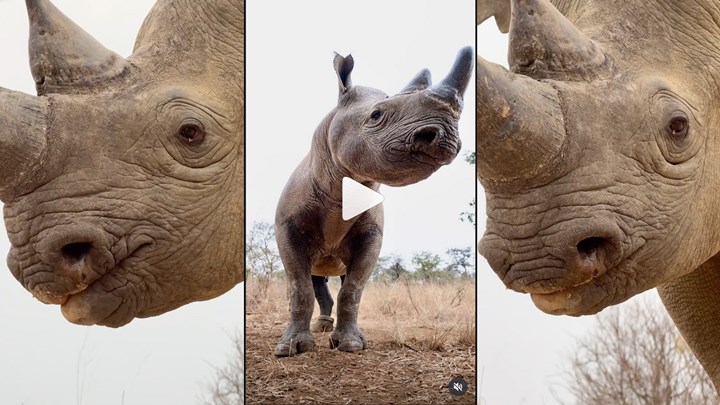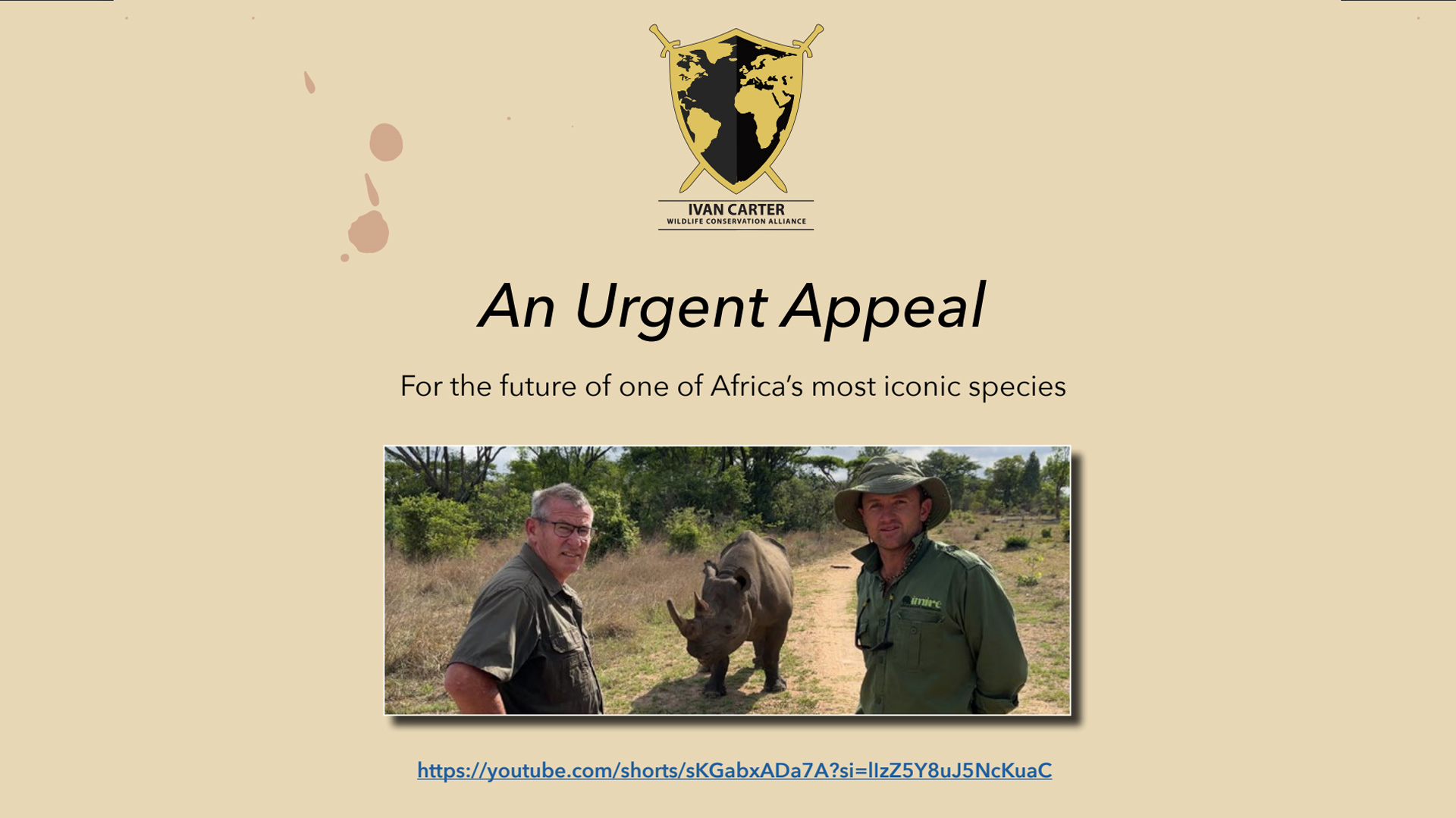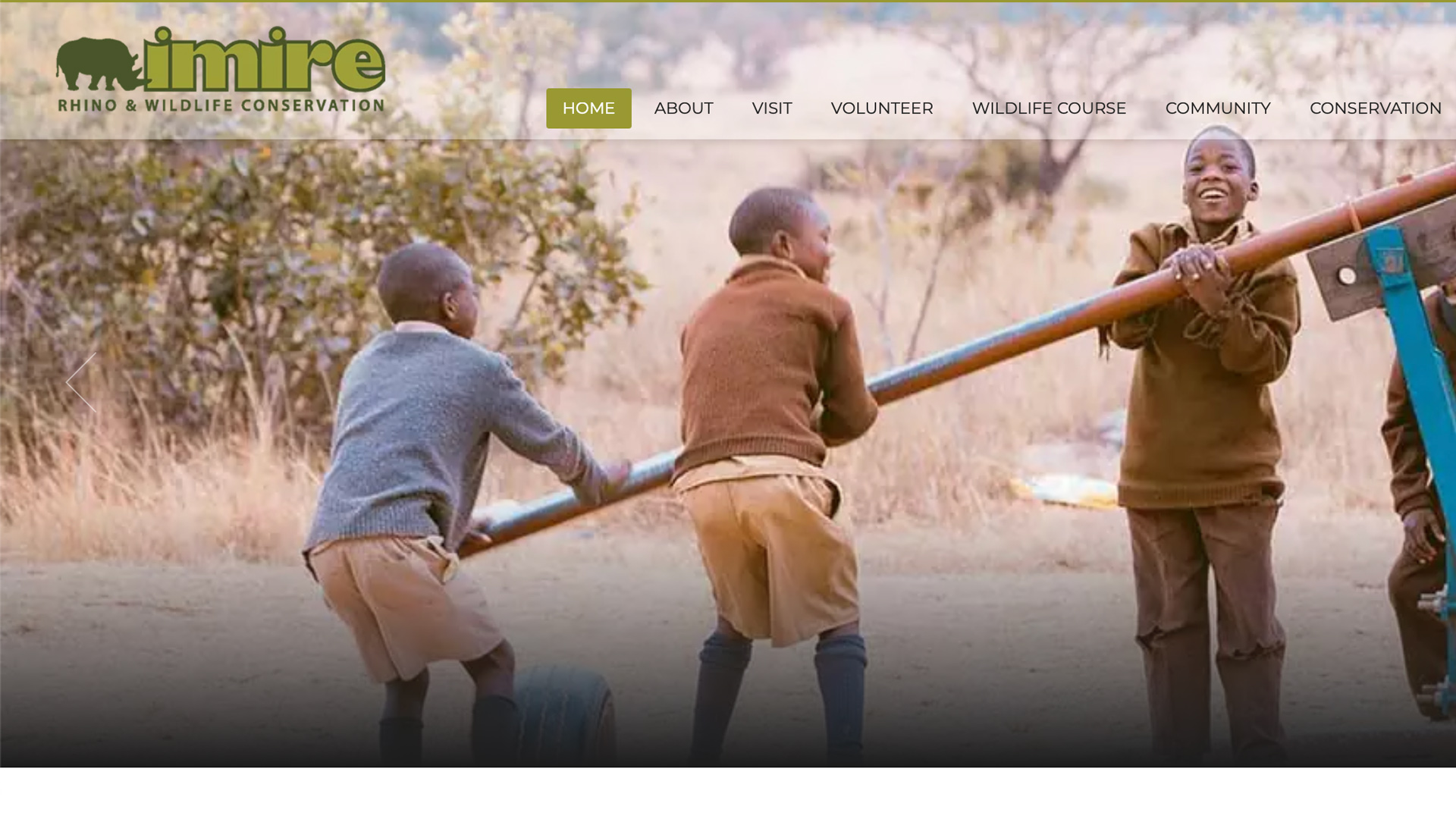
by Karen Mehall Phillips, NRA Media - Friday, May 30, 2025

On April 28, poachers broke into the Imire Rhino and Wildlife Conservancy in Zimbabwe in search of the most valuable and coveted appendage in the world of illegal wildlife trade: rhinoceros horn. Their cruelty knew no bounds as they shot and killed a tame 22-year-old black rhino male called Gomo and, with axe in tow, massacred its head and face and seized its horns. While the crime made immediate social media news, those who live amongst Africa’s wildlife say a rhino is poached every 15 minutes as rhino horn continues to sell for more than diamonds or gold on Asia’s black market. As hunter-conservationists’ fight to protect rhinos continues, the Ivan Carter Wildlife Conservation Alliance (ICWCA) is hosting an online fundraiser for the conservancy to help provide for enhanced security measures with a goal of raising $100,000.
The poaching of Gomo, the Imire Rhino and Wildlife Conservancy’s oldest male rhino, brutally and abruptly ended its near-20-year track record of operating poaching-free. In a statement released by conservancy director Reilly Travers, whose family has served as custodian of the conservancy’s wildlife for four generations, the crime is even more personal and emotionally devastating as his family members have dedicated their entire lives to sustaining groundbreaking rhino and other endangered species breeding programs and advancing wildlife research, wild game capture and transport, and anti-poaching solutions—efforts that could not succeed without the generous financial support of local communities, conservation groups and individuals worldwide mobilizing to protect Africa’s wildlife.
As shared by Ivan Carter, managing director of ICWCA, who was quick to spur conservationists’ call to action on Instagram and other social media platforms, Gomo was a trusting dominant rhino bull that had sired six black rhinos at Imire and was an icon for the species. “We were hopeful that his powerful presence would be felt across the Southern African landscape for many years to come,” Carter said. “cut down for his horn—his legacy tragically halted—we mourn his loss. … Please join us in this fight.” (#justiceforgomo) Noting how Gomo means “mountain” in the Shona language, Carter pledged that conservationists would continue to climb the huge mountain of greed and corruption in the bull’s honor as poaching and the illegal trade in rhino horn remain the biggest threats to the species’ survival.

According to the ICWCA fundraising appeal, the poachers accomplished their gruesome mission despite the facility’s anti-poaching rangers and K-9 detection unit, prompting the need for immediate security upgrades to keep up with poachers’ ever-expanding technology and networks. Ensuring the future of the conservancy’s remaining rhino population and new calves that provide hope for the species begins with adding even more layers of protection, including:
Recognizing the costs involved, the facility is asking for support from the public. “Help ensure your children see rhino and grow up in a world where we did something to stop extinction,” the Imire website states. “Share our posts, stories and campaign links. Donate if you can. Volunteer on conservation projects. Talk about poaching and conservation with friends. We would be so grateful if you would partner with us to make a real difference.”

Pledging that Gomo’s legacy will drive Imire’s mission forward, Travers took to Facebook noting, “The stark reality of the ongoing threats faced by rhinos only strengthens our resolve to protect them. We are more committed than ever to ensuring justice for Gomo and all those like him.”
Underscoring the shared values between hunters and wildlife conservationists, Imire’s mission is to protect endangered wildlife in Africa, focusing primarily on the protection and breeding of the endangered black and white rhino, while supporting the conservation of all wildlife species. As highlighted on its website, the facility exists to support Zimbabwe’s endangered species and to build and retain vital gene pools to repopulate areas most severely affected by poaching. In 1987, Imire was given custodianship of “the Magnificent 7”—seven orphaned baby black rhinos that could not survive on their own. Its breeding program had begun. Over the next three decades, 21 rhinos were born, with 12 released to start new lives in Zimbabwe’s national parks. In 2021, Imire partnered with The Aspinall Foundation and received two captive-bred cheetah to begin increasing the country’s dwindling cheetah population.
The fight to protect rhinos is a never-ending battle as rhino horn brings as much as $60,000 per kilogram on the black market. Such a high price tag continues to incentivize poachers in a region of the world where poverty and high unemployment rates only perpetuate the illegal trade in rhino horn.
To make a tax-deductible contribution to the ICWCA’s Imire Rhino and Wildlife Conservancy Security Fundraiser, donate directly to the ICWCA by clicking here or visit the ICWCA’s Mighty Cause fundraising platform here. A small but effective group, the ICWCA is a 501(c )3 organization that places tremendous value on building relationships and partnering with other individuals and groups on the front lines to achieve good things for wildlife. In the words of Ivan Carter, the end result is more wildlife and healthier ecosystems—something every hunter-conservationist supports.
About the Imire Rhino and Wildlife Conservation Conservancy
Located in eastern Zimbabwe about 75 miles from the capital of Harare, the Imire Rhino and Wildlife Conservation Conservancy was founded in 1948 as the Imire farm by Norman and Gilly Travers and established as a conservancy in 1972. The property spans 10,000 acres dedicated to protecting Africa’s endangered species with primary focus on the protection and breeding of the endangered black and white rhinoceros. Today it is recognized for its groundbreaking breeding programs, endangered species rewilding initiatives, wild game captures and transports, and advanced anti-poaching solutions.
Promoting global awareness of the poaching crisis in Zimbabwe and other African nations, the conservancy welcomes visitors worldwide to serve as wildlife conservation volunteers and work with its rhinos alongside conservation experts. Volunteers observe and monitor iconic African wildlife species, including rhinos, elephants and cheetah, while learning about anti-poaching efforts from Imire’s dedicated K-9 unit. Volunteers also work alongside community members on income-generation projects and with community children and young adults at its onsite Learning Centre and Library. In step with the Travers family’s vision, the conservancy enhances relationships between conservation programs, community areas and tourism through long-term sustainable environmental management and community projects. For more information, click here.

E-mail your comments/questions about this site to:
[email protected]
Proudly supported by The NRA Foundation and Friends of NRA fundraising.
